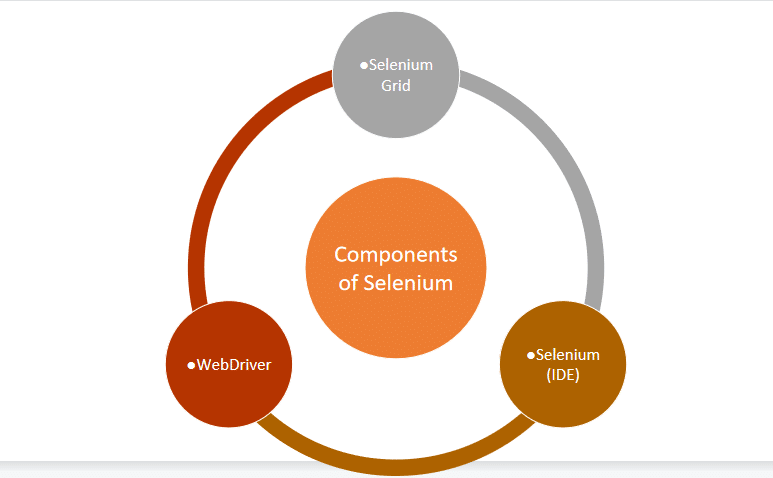Selenium Automation Testing: Establishing A Strong Foundation for Developing a Web App

Testing a web application helps to find and fix bugs in the code before they get a chance to creep in and causes problems for the users.
Additionally, application testing helps to confirm that the application works correctly on numerous browsers and operating systems.
But performing application testing requires a lot of time as there are many scenarios to consider. Automation testing saves a lot of time and also helps to improve the testing process.
However, the execution of automation testing requires a thorough understanding of numerous tools and frameworks.
Among these tools, Selenium is one of the most popular tools for automating web application testing because of its relevant features.
It is widely used to automate tests on websites to monitor their functionality and performance. Selenium allows testers to easily write test scripts in various programming languages and run them on several different browsers and operating systems.
In this article, we discuss Selenium Testing, including what Selenium is, its importance, its components, and how it can be used to establish a strong foundation for developing web applications. Let’s get started.
Selenium
Selenium is a resourceful open-source framework for automating web applications. It is preferred by many web developers because of its ability to support various browsers and operating systems.
Selenium supports many programming languages like Java, C#, Python, etc to create Selenium Test Scripts. Java is one of the most popular ones among developers when it comes to Selenium automation testing because of its compatibility with other applications and ease of use.
Testing performed using the Selenium testing tool is referred to as Selenium Testing. It is designed to automate web applications only.
This framework is used to test and validate web applications’ functionality across different browsers and platforms. Selenium testing brings immense benefits, it offers robust, browser-based automation for end-to-end testing.
Components of Selenium

Selenium is not just a single tool but a suite of tools. It comprises three major components each catering to different testing needs of an organization. Below is the list of tools.
- Selenium (IDE)
- WebDriver
- Selenium Grid
1. Selenium Integrated Development Environment (IDE)
It is a Firefox plug-in that allows the testers to record all the automated test actions performed in the browser and playback the recorded action later.
Selenium IDE lets the testers create and run automated tests quickly and with ease.
Selenium IDE Chrome has an in-built debugger that enables troubleshooting the tests. Using Selenium IDE requires installing the Selenium add-on for Firefox or Chrome and then by clicking on the Selenium icon in the Firefox or Chrome toolbar Selenium IDE will open.
2. Selenium WebDriver
Selenium WebDriver has been very popular since the beginning. It is a powerful, flexible, open-source, test automation framework used to automate web browser interaction from a user perspective.
Selenium WebDriver enables you to write test web applications that simulate user interactions.
Because it directly works on the browser and uses the browser’s in-built features to trigger the automation test written by the tester.
It supports many different programming languages, such as Java, C#, Python, and Perl. It includes several over-the-top features, such as discovering elements on a web page and capturing screenshots of your tests automatically.
Using Selenium WebDriver users can automate and execute tests against different browsers and platforms.
The architecture of Selenium WebDriver consists of four major blocks that are Selenium Client Libraries, JSON Wire Protocol, Browser Drivers, and Browsers.
3. Selenium Grid
Selenium Grid enables the testers to test parallelly by distributing the tests across multiple devices or virtual machines.
This allows scaling the test automation quickly. Selenium Grid is an essential part of the overall Selenium test suite and enables the execution of automated tests much faster.
How does Selenium work
Selenium is a testing tool for web automation, using Selenium testers, can write automated tests in various programming languages. This enables testing the functionality of the web application on different browsers and operating systems.
Using the Selenium Testing Tool requires installing the Selenium WebDriver.
It is a browser automation tool that works by emulating the actions of a user. It allows running Selenium tests on different browsers and operating systems. Once the Selenium WebDriver is successfully installed, testers can start writing their Selenium tests.
When they write a Selenium test, they specify the actions they want to take, and Selenium automatically will execute those actions on the browser and report errors if any.
Why Selenium Automation Testing
In the real world, testers need to check all user workflows of a website for breakage, on as many operating systems and browser combinations as needed to meet the compatibility standards.
Testing the website manually and ensuring that the web app is fully functional may take anywhere between hours to weeks.
This is why testers set aside exhaustive testing with automation, powered by Selenium.
Selenium is an automation testing framework for many web browsers. Selenium WebDriver is used to automate browser testing across numerous browsers, including Google Chrome, Mozilla Firefox, Safari, and Internet Explorer.
While Selenium has several advantages, the following are a few more important ones, which describe why most people choose Selenium as preferred over other testing tools
- Selenium Automation testing is available as an Open source tool with great community support.
- Selenium has a user-friendly interface making it simple to build and execute test scripts.
- It has excellent visibility for testing end-to-end apps.
- This automation test suite can be reused and tested on a range of browsers and operating systems.
Who uses Selenium
Most programmers and developers who build web applications use Selenium to test them. The biggest advantage of Selenium, which has made it so popular, is its flexibility to use.
Professionals who create web programs use Selenium to test the code and applications. They can also debug and perform visual regression tests as per code requirements
Many QA engineers test their web applications using Selenium. They write scripts to maximize the accuracy and test coverage and make changes in the project to maintain the infrastructure of the test and increase productivity.
Some of the major benefits that Selenium brings in establishing a strong foundation for Web Application Testing
Independent Platform
Selenium can be operated across multiple Operating Systems like Windows, Mac, and Linux. It helps the testers to avoid writing test scripts for each platform that is to be tested.
A test suite created over any platform can be executed on another one as it follows the principle of writing one test script and can run with ease on any platform.
Support across browsers
Selenium is highly resourceful in executing tests and testing them across various browsers simultaneously. As it offers multiple browsers support, including Internet Explorer, Chrome, Firefox, Opera, and Safari.
Support for multiple programming languages
One of the major challenges that come with automation testing is the integration of automation tools with the development environment for Continuous Integration.
Selenium provides support for a range of programming languages like Java, Perl, JavaScript, C#Ruby, Python, and many more, so that it can be easily integrated with the dev environment. This also enables the developers and testers to work with the language they are proficient with.
Reusability and Add-ons
Selenium Test Automation framework uses scripts that are reusable and can be tested directly across multiple browsers, and operating systems. However concurrently, it is possible to execute multiple tests with Selenium, by implementing add-on tools to broaden the scope of testing. As it covers almost all aspects of functional testing.
For example, for source code compilation it can integrate with ANT or Maven type of framework. Further, for testing applications and reporting purposes it can be integrated with the TestNG framework. And Continuous Integration (CI) can be integrated with Jenkins or with other open-source tools to support other features.
Handy Script for Cross-Browser Testing
With the help of cloud grids for cross-browser testing, testers can test across browsers in parallel using only one test script. This helps the testers to avoid writing scripts for multiple platforms, thus saving a lot of time. Users may use various devices and platforms to access the web application. Selenium allows the test team to improve their test coverage with just a single test script that can be used over other devices and platforms.
Parallel Test Execution and Faster Go-to-Market
The main aim of automated testing aims to save time and effort. The Selenium Grid encourages the test teams to facilitate testing by automatically executing multiple test cases in parallel to the multi-browser platforms. Thus reducing the test execution time, by ensuring enhanced testing quality and faster time to market.
Flexibility
Test management is crucial in the testing life cycle. Selenium makes it easier and more efficient with features like regrouping and refactoring test cases. This allows the developers and testers to make quick changes to the code, reduce duplication, minimize complications and improve maintainability.
Because of these flexible features, Selenium has become more popular and usable among developers and testers as compared to other automation testing tools.
Early Defects
Early defect detection leads to cost-effective code rework. Selenium not only detects and resolves flaws earlier, but also it helps in maintaining the overall pace of code development that too without compromising the functionality of web apps
Efficient Testing
Compared to manual testing automation testing takes less time to set up. However, automation using Selenium is much faster than other automation testing techniques. Selenium framework requires much less time to complete the setup than other tools. This makes it the most efficient tool for web application testing
Ease of implementation
Selenium offers a user-friendly interface that helps the test team to create and execute tests easily and effectively across different platforms. The open-source feature helps the test team to create the script with their proficiency, so they can develop customized tests easily. Also, one of the main reasons making Selenium the best choice is its reporting capabilities that allow the testers to extract test results and take necessary action for improvements.
Selenium test automation for web applications using LambdaTest
To ensure that the developed web application works fine with all web browsers that are expected to be supported, every organization must perform Cross-browser testing.
Web applications are different from native windows applications. Users can access web applications in any browser.
Each browser has different architecture and features, so it may render web applications differently. Therefore, it’s important to make sure that the web application works as intended across each browser so that the user can access it seamlessly.
And this can only be achieved by running the Selenium tests on real browsers and devices for accurate results. Therefore it is recommended to Perform cross-browser testing on a real device cloud platform like LambdaTest.
LambdaTest is a cloud-based cross-browser compatibility testing platform that allows running tests on a cloud of more than 3000 real devices, browsers, and operating systems with the respective versions.
This platform also lets the testers run parallel, and end-to-end tests on a Cloud Selenium Grid to get faster results without compromising on accuracy.
Testers can also conduct Cypress testing across Windows and macOS. LambdaTest allows the identification of bugs before users do it by testing an application in real user conditions with LambdaTest.





